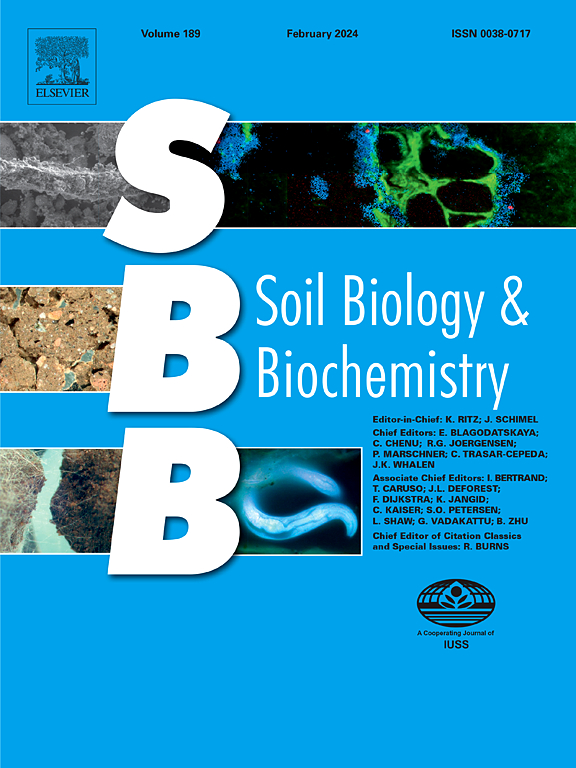Exploring testate amoebae as taxonomic and functional bioindicators to inform peatland habitat status and blanket bog restoration
IF 9.8
1区 农林科学
Q1 SOIL SCIENCE
引用次数: 0
Abstract
Many UK blanket bog peatlands are degraded due to historical management including drainage, leading to reduced biodiversity, carbon sequestration and water storage. Currently, much restoration efforts including rewetting and revegetation strategies are being deployed aiming to restore habitats towards intact and ecohydrologically functioning ecosystems. However, it remains unclear how these efforts affect the key microbial consumers, testate amoebae (TA), especially their functional traits, and whether TA can be used as a generic tool to monitor the long-term hydrological restoration success. This study compared TA communities and their key functional traits at one intact and three near-intact sites versus three modified blanket bog sites with different habitat conditions (i.e., least modified, post-restoration, and degraded) to assess their environmental responses, bioindicator potential and explore their possible functional contribution to ecosystems in the process of recovery. The results showed: 1) TA community composition gradually changes from degraded to intact sites in both Sphagnum and surface peat, with distinct dominant TA species in each; 2) soil moisture, Sphagnum cover, and phosphorus content strongly relate to TA composition; 3) Hyalosphenia subflava and Corythion dubium indicate dry conditions, while Archerella flavum and Amphitrema wrightianum are indicators of wet conditions; 4) significantly higher community-weighted mean values of TA traits (biovolume, aperture width, siliceous tests) in surface peat at the least modified areas suggest TA's strong role in carbon and silica cycling following rewetting. Our findings support TA as bioindicators for tracking habitat hydrological conditions and restoration progress in blanket bogs, effectively linking community composition to ecosystem functions.
求助全文
约1分钟内获得全文
求助全文
来源期刊

Soil Biology & Biochemistry
农林科学-土壤科学
CiteScore
16.90
自引率
9.30%
发文量
312
审稿时长
49 days
期刊介绍:
Soil Biology & Biochemistry publishes original research articles of international significance focusing on biological processes in soil and their applications to soil and environmental quality. Major topics include the ecology and biochemical processes of soil organisms, their effects on the environment, and interactions with plants. The journal also welcomes state-of-the-art reviews and discussions on contemporary research in soil biology and biochemistry.
 求助内容:
求助内容: 应助结果提醒方式:
应助结果提醒方式:


